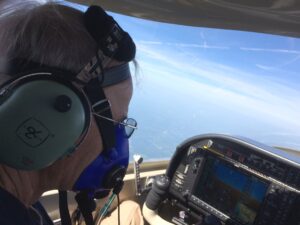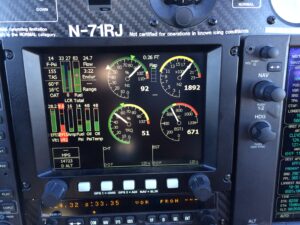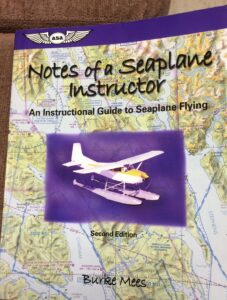7 ways to make seaiwnd fly faster
7 ways to make seaiwnd fly faster

7 ways to make seaiwnd fly faster-Part of flying safer means talking with others. Earlier today, I hung up the phone from an all too familiar call with a widow of a tragic airplane crash. Even after over two years, the sorrow she shared was gripping and sobering. That sad day in 2014, she had not only lost a loving husband, but a copilot friend too.
Like her husband, the copilot was also a dad, a friend, a brother and a son. There were no survivors. Something critical had been overlooked. Understanding the cause of this fatal crash and so many others over my flying years I reflected; “what makes my Seawind fly safer than other Seawind builders and even safer than some type certificated airplanes like Cirrus, Cessna and Piper?”
1. Maintenance.
First, an FAA Approved maintenance schedule is the foundation of the ongoing airworthiness of my Seawind, N71RJ. Although according to FAR 91.409, only an annual inspection is required, considering safety and the complexities of my turbine-powered Super Seawind, I crafted a rigorous routine inspections and testing program. Though I have no commercial missions, I added 50 and 100 hour inspections that equaled or exceeded manufacturer schedules. This has permitted me to catch and correct maintenance issues early. Further, under experimental regulations, I can add safety features that type-certified airplanes can’t. Often, simple things can and do make a big difference. I am an advocate for preventive maintenance and fixing little problems before they can become big ones. A good example is replacing still serviceable brakes and tires early with new ones to boost safety and performance. Another safety measure is the temperature tape monitors I have placed in heat sensitive areas such as brakes to keep tabs on any over limit conditions to detect flaws early on.
2. Parts.
The best parts and equipment begins with the world’s safest, most reliable and best supported engine, the Pratt & Whitney PT6, http://www.pwc.ca/. It has logged millions of fault-free flight hours over its fifty-year history. Add to it state-of-the-art engine sensors, a new five-blade MT composite propeller for air biting efficiency.
3. Back up.
Redundant flight vital systems are the basis of VFR and certainly IFR flights. To begin, the engine is fed by not one or two, but four fuel tanks, two on each wing and three fuel pumps; two are electrically driven airframe and one is a mechanically driven engine pump. In addition, instead of older ELT technology where search and rescue has to cover an area the size of a small state to locate a crash site, the Artex 406 megahertz GPS beacon, that when activated, pinpoints my Seawind’s location to the area of a city block. How about duel multi-function and primary function displays (MFD, PFD)? Add Grand Rapids Engine Technologies, GRT, http://www.GrandRapidsTechnologies.com, monitoring System, EIS, and you have a beautiful marriage. Other redundant technologies include the G-1000 equivalent, the G-900X also with synthetic vision, and a Garmin SL 30 Com/Nav radio and now you have triple GPS/VOR navigation systems.
4. Autopilot and control.
Finally, the Trutrak autopilot, http://www.trutrakap.com/ is coupled with the G-900 and may also couple with the GRT because the latter also has synthetic vision and full PFD and MFD functions. Trutrak also works independently as a fail safe. It can guide my Seawind all the way to the runway threshold. Dual Ray Allen, http://www.RayAllenCompany.com, yoke click switches make trimming and cockpit radio communications a breeze. All together, these coordinate as the N71RJ’s central nervous system.

5. Current software and navigation databases
make all the difference in route and destination flight planning, management and also for continuous monitoring flight and engine data. It’s refreshing to me to see the airplane computers are doing the heavy lifting and taking that load off me. After flying steam gauges for decades where my eyes were the only monitor, it’s comforting to know that I can review engine and flight data and trends long before the next flight to check for anomalies and even share the information with maintenance staff, including the engine manufacturer, Pratt & Whitney.
6. Inspections and Records.
Rigorous routine inspections and testing is essential. You’ve heard it and I’ve heard it; if it wasn’t recorded it wasn’t done. I’ve maintained logbooks for the big three; the propeller, engine and airframe. I also back logbooks up electronically. That’s important to me in case the paper records are lost or destroyed, but also because e-records allow specific item searches. I use Planelogix, http://www.PlaneLogix.com for this. The software has an alarm timer feature that reminds me of pending airplane inspections, a nice feature for aircraft owners and maintenance staff.

7. Flight Training.
Last, but not least is my ongoing flight training program. To me there are three categories I focus on; the airplane functionality, the flight environments, and me – what I need to know and do to be a good pilot. This various forms from reading articles, studying current airplane manuals, their systems and limitations, simulator training, flying, taking flight instruction that are above and beyond FAA requirements and staying mentally and physically fit. Flight safety training is available to all pilots via FAA FASST pilot proficiency program, http://www.faasafety.gov/WINGS/pppinfo/default.aspx. It’s free and it’s an excellent way to stay knowledgeable in a world where pilots are ever shorter on time. In 2016, for example, I earned enough credits to earn a master wings certificate for both land and sea airplane operations; cool!

Rigorous routine inspections and testing,
the best parts and equipment, accurate records and historic data, redundant flight vital systems, current and accurate navigation databases and ongoing flight training program are the essentials of safely flying my Seawind, N71RJ. I recognize that flight risks cannot be eliminated completely, but they can be managed and reduced significantly. Following this method is my way. Wouldn’t it be great if other builders and owners practiced my 7 ways to fly safer? Perhaps then there would be at least one less aviation related widow or widower created with the passing of each month. That’s something to work for.
More references: Artex: http://www.sportys.com/pilotshop/safety-and-survival/emergency-locator-transmitters-elts/artex-elt-345.html
THIS WAS ALL IN 7 ways to make seaiwnd fly faster
ALSO READ Super Seawind Ready For Flight – Almost


3 Responses
Hi Steven,
The two photos, where you write” My engine mounted?: It’s not yours, as it is mine . Look well you’ll see that the tubes are out of plastic and the place they are fixed to is a plywood plate.(My tubes are straight, your’s are not straight but with an angle? The form of you’rs is completely different. The fixation to the firewall bulkhead. On mine it’s fixed with 48 AN-4. how many bolts are in yours? I think it’s 24, as I still have the old Lycoming engine mount with 4 x 6 bolt holes. The other photo with the date is from Jacky’s KODAK HD, I bought in 2007.
what is the glide ratio for the Seawind 3000 IO540 with STOLL kit. Is it possible to use this plane, with a qualified instructor, as a primary trainer for a new student pilot?
Dear Eric; I’m sorry I don’t know what an IO-540 powered Seawind glide ration is when STOL equipped. My turbine is much lighter and it have very different performance numbers. What Seawind do you own or are you building one?